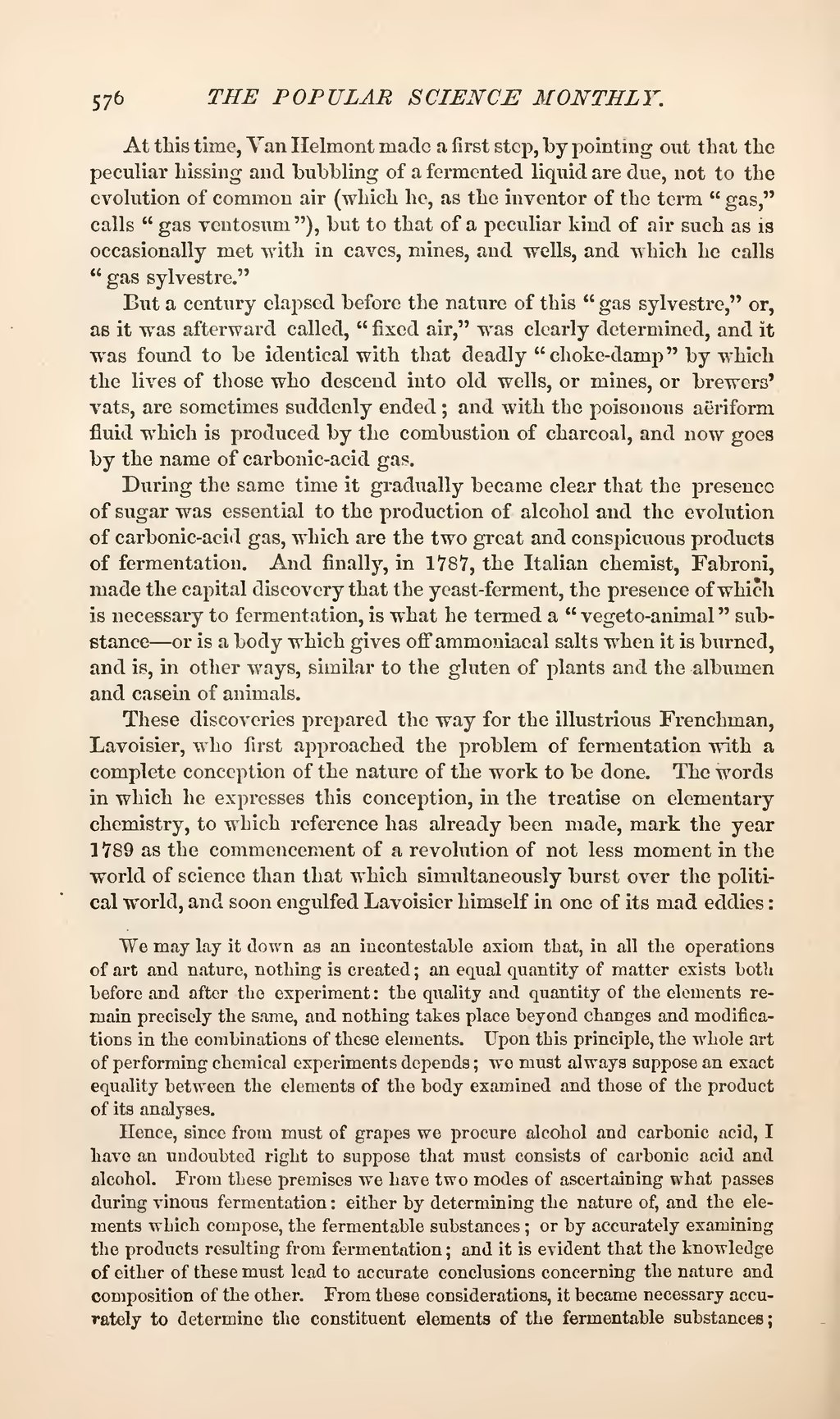At this time, Van Helmont made a first step, by pointing out that the peculiar hissing and bubbling of a fermented liquid are due, not to the evolution of common air (which he, as the inventor of the term "gas," calls "gas ventosum"), but to that of a peculiar kind of air such as is occasionally met with in caves, mines, and wells, and which he calls "gas sylvestre."
But a century elapsed before the nature of this "gas sylvestre," or, as it was afterward called, "fixed air," was clearly determined, and it was found to be identical with that deadly "choke-damp" by which the lives of those who descend into old wells, or mines, or brewers' vats, are sometimes suddenly ended; and with the poisonous aëriform fluid which is produced by the combustion of charcoal, and now goes by the name of carbonic-acid gas.
During the same time it gradually became clear that the presence of sugar was essential to the production of alcohol and the evolution of carbonic-acid gas, which are the two great and conspicuous products of fermentation. And finally, in 1787, the Italian chemist, Fabroni, made the capital discovery that the yeast-ferment, the presence of which is necessary to fermentation, is what he termed a "vegeto-animal" substance—or is a body which gives off ammoniacal salts when it is burned, and is, in other ways, similar to the gluten of plants and the albumen and casein of animals.
These discoveries prepared the way for the illustrious Frenchman, Lavoisier, who first approached the problem of fermentation with a complete conception of the nature of the work to be done. The words in which he expresses this conception, in the treatise on elementary chemistry, to which reference has already been made, mark the year 1789 as the commencement of a revolution of not less moment in the world of science than that which simultaneously burst over the political world, and soon engulfed Lavoisier himself in one of its mad eddies:
We may lay it down as an incontestable axiom that, in all the operations of art and nature, nothing is created; an equal quantity of matter exists both before and after the experiment: the quality and quantity of the elements remain precisely the same, and nothing takes place beyond changes and modifications in the combinations of these elements. Upon this principle, the whole art of performing chemical experiments depends; we must always suppose an exact equality between the elements of the body examined and those of the product of its analyses.
Hence, since from must of grapes we procure alcohol and carbonic acid, I have an undoubted right to suppose that must consists of carbonic acid and alcohol. From these premises we have two modes of ascertaining what passes during vinous fermentation: either by determining the nature of, and the elements which compose, the fermentable substances; or by accurately examining the products resulting from fermentation; and it is evident that the knowledge of either of these must lead to accurate conclusions concerning the nature and composition of the other. From these considerations, it became necessary accurately to determine the constituent elements of the fermentable substances;